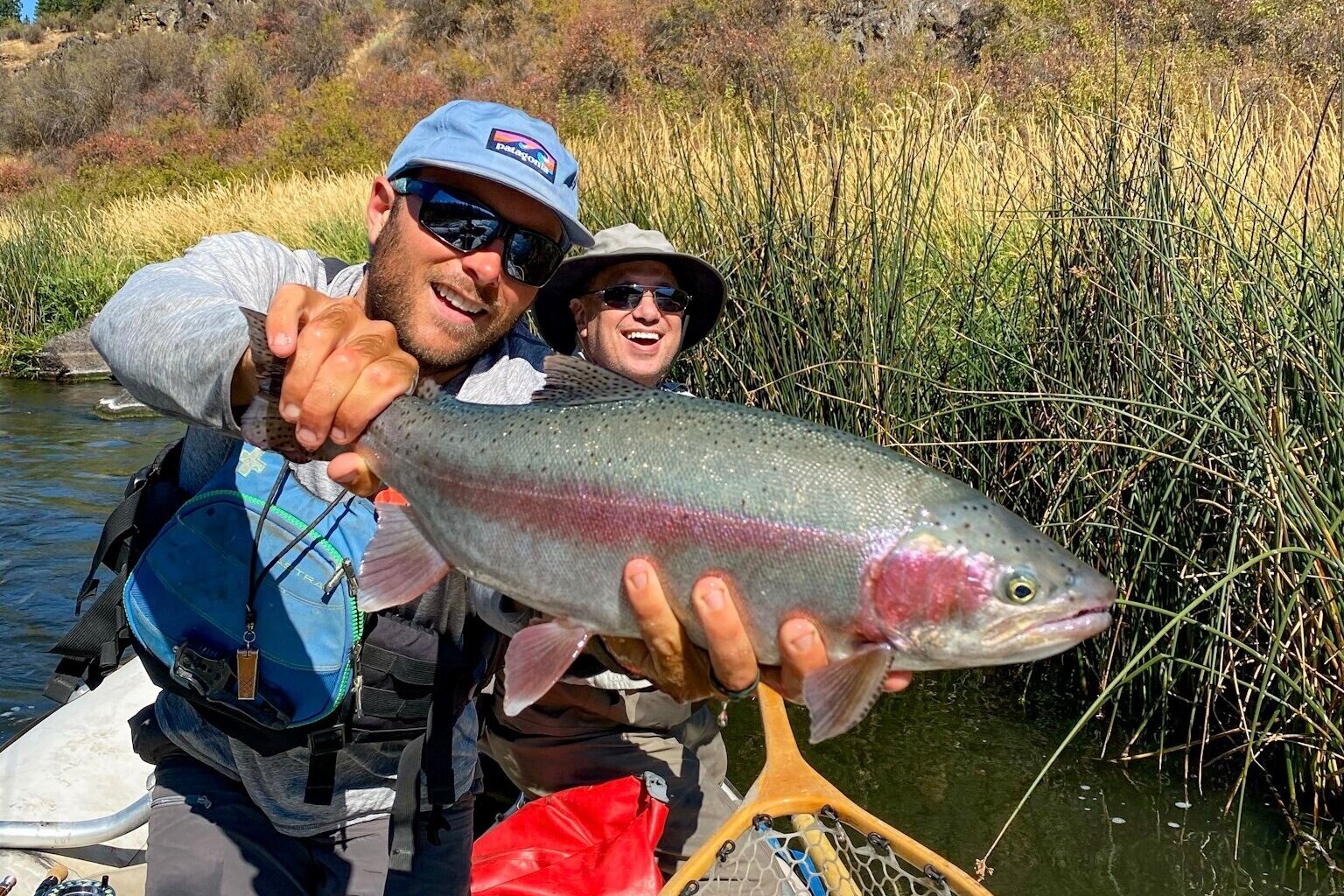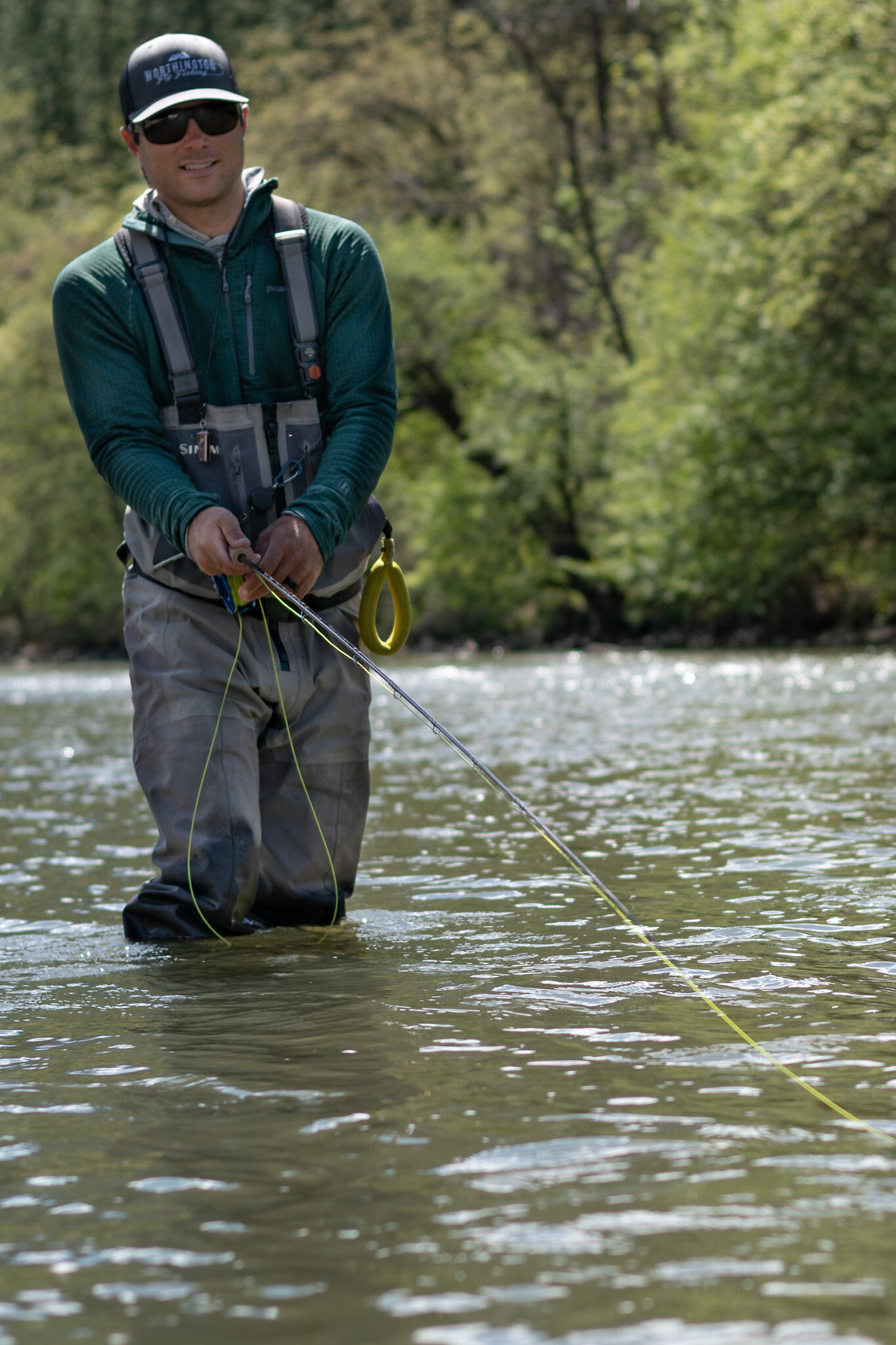Choose the Right Fly
You can’t catch a fish with a streamer unless you fish one, so the first step is to simply tie one on! Like all flies in the shop bins, many catch the anglers eye, but most play on just a few major themes. In streamer fishing, you’re eliciting a reactionary response from the fish so they wont scrutinize small details much. Size, color, contrast, flash, weight and movement are big themes. Look at fly profile and have a few patterns with different builds. Some of the most time tested patterns are still highly effective and deserve a few slots of foam; Wooly Buggers, Muddler Minnows & Zonkers are great. Most bait in trout streams are earth tones; tan, olive and brown, often mottled, light on the belly and darker on top ranging from 1-3 inches in size. Black is excellent too, and have a few white flies tucked in the corner as trout are cannibalistic!
Cast Angles Instead of mending
Streamer fishing isn’t just chuck it out there and rip the fly around (although sometimes that works great!) Take to the water with strategy in mind as you would when nymph or dry fly fishing . Find the area where you think a fish would be holding and fish the fly through that likely water. This means picking a target for the fly above or beyond the holding lie as set up, then pulling, swinging or twitching your fly through that zone. Analyze how your fly line laying over the currents between you and your fish will belly the line and anticipate how that belly will pull your fly. The further upstream you cast the less belly will form as the fly comes back between you and your target. The further across you cast the more belly and tension will form on the line and the more “swing” the fly will have. More belly means the fly is riding higher in the water column, has more tension, and typically, is running faster as well.
And don’t mend much either. Mending simply adds a step between the fly hitting the water and when you engage the fly, which is inefficient. Pick your target, pick your angle, slap it in there and get that fly fishing!
Get the fly down
There are two good ways to get your streamers down. Sinking line or floating lines with a leader, heavy fly, or added weight. Most of the time I find using weighted flies and adding weight to my leader is more versatile then sink tip lines because you can add or remove weight quickly and change between methods efficiently. I find leader lengths between 5 and 10 feet tapered to no less then 8lb most useful for most situations. Shorter leaders for smaller water or heavily pocketed water is good while longer leaders allow for more sink. Split shot can be added to get an unweighted fly to sink and to really dredge, add shot to a weighted fly, 3-12 inches up the leader.
Vary your retrieve
A good retrieve is crucial for streamer fishing. The retrieve is how quickly you pull line back in, how long the strip is, and how frequently you pull line. Practice grabbing your line just behind your rod hand, pulling, letting go and grabbing again. No matter the retrieve you are using, you need to be fluid at dropping the line you just pulled and finding it again at your grip hand with very little break. Keep your hands tight and close together for better line control. Trout like all kinds of retrieves, so try different ones until you crack the code. Generally, baitfish swim in little bursts, so a good place to start is with several quick, pulls followed by a very brief pause. Follow up with a few more quick jerky pulls and make sure you fish your fly right into the leader. Many times I’ve been pulling my fly out for the next cast to find a vicious take just as the fly was leaving the water! Those trout just can’t stand a meal getting away! If your initial retrieve doesn’t work, try something different. Sometimes they want it swung, sometimes they want it fast and jerky and still other times a smooth slow retrieve all the way back to the boat.
Steer the fly with your rod tip
Perhaps the easiest way to picture this concept is to go to a pool, tie on a streamer and cast it it out there. Start stripping it back and it will come back in a straight line between where it started and the rod tip. On your next cast, move the rod to the right while stripping, and then back to the left. You’ll notice your streamer chasing your rod tip movement, coming back in an “S” pattern. Use this concept to steer the fly on the retrieve around boulders, seams and through different currents in the river. Expanding on this concept you can interchange rod movement with stripping to further maneuver your fly through the water column. This is really where the training wheels come off in streamer fishing and you have the utmost control over your flies. How deep they are, how fast they move through the water, and what movement the fly shows to the fish is all up to you now.
We offer guided streamer fishing trips May - November on the wild rivers of Southern Oregon and Northern California and base out of Ashland, Oregon. Our trout are aggressive and love to chase, offering a perfect place to learn streamer fishing methods, experience the fun and advance your angling skills.




